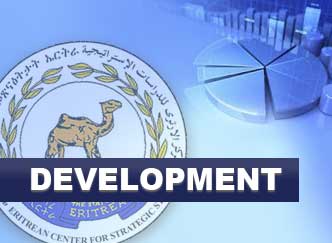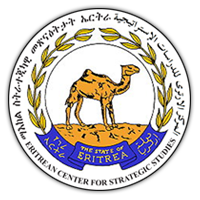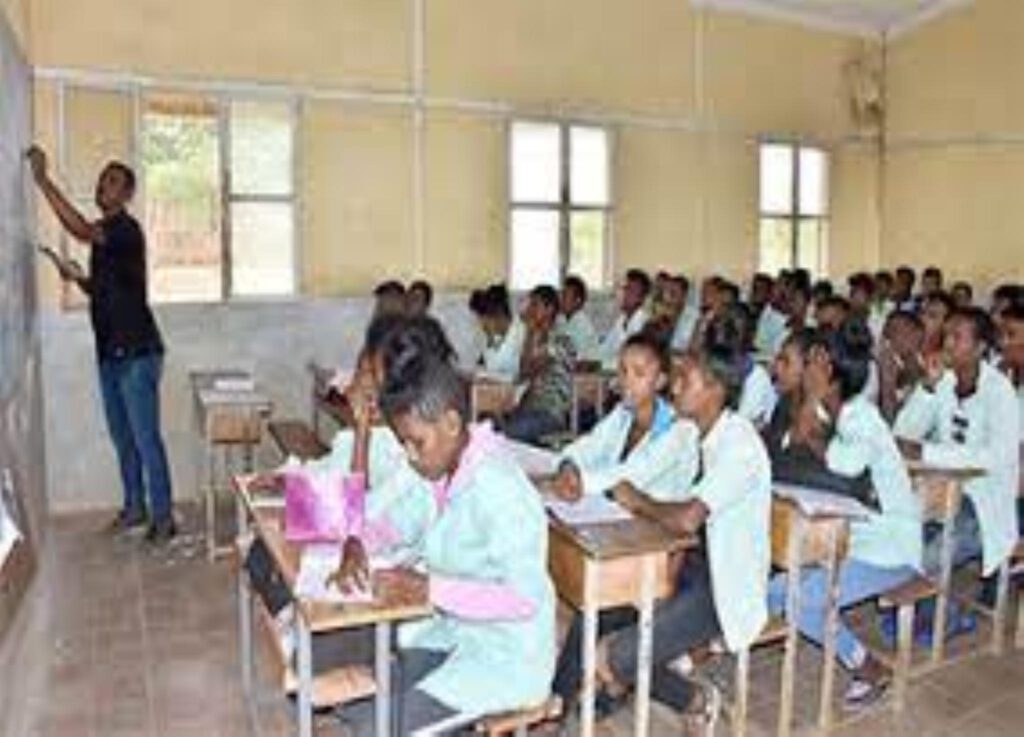December 31, 2012
Economic, social and cultural transformations
 by Million Eyob | Even though the EPLFs primary task has been to wage armed struggle to free the Eritrean people from the colonial yoke, it has not shelved the objective of economic, social and cultural transformation, as this is an integral part of the revolution. Thus, it has been making steadfast effort to implementation the policies and objectives outlined in its political program.
by Million Eyob | Even though the EPLFs primary task has been to wage armed struggle to free the Eritrean people from the colonial yoke, it has not shelved the objective of economic, social and cultural transformation, as this is an integral part of the revolution. Thus, it has been making steadfast effort to implementation the policies and objectives outlined in its political program.
The improvement of the livelihood of the masses through economic transformation was a task the EPLF has begun to tackle before its first congress and to which it accorded greater importance after the congress. Since over 80% of the Eritrean people depend on farming and livestock raising, the improvement of their lives takes priority.
When large rural areas and most towns were liberated, much needed changes in the tenure of land were made and land redistributed in a manner that benefited the majority.
The aim of these measures which were taken parallel with the formation of popular institutions was the improvement and expansion of agricultural and livestock production. Land disputes between villages and nationalities were also solved by mediation. Modern farms formerly owned by the Ethiopian government and its foreign collaborators were brought under the control of the EPLF and popular institution in order to save them from disuse and improve their productivity. Steps were taken to ensure the rights of landless poor farmers and women to own land, so as to enable them improve their economic lot and to become free and self-supporting citizen. The EPLF worked to rehabilitate large disuse farms and to open up cultivable land for production. It encourages the people to pull their man power and material resources, form cooperatives, solve their common problem and increase their produce. To protect animal resource, it provided veterinary services. It also begun to provide agricultural training programs as well as production and technical assistance to alleviate the shortage of agricultural implements and improve the capacity of farmers to produce farm equipment. Efforts were also made to improve irrigation canals and other water control systems. In order to ease the problems of the masses, the EPLF participated in many productive activities, studies and research were also started to help improve the implementation and result of agricultural plans and projects.
When in mid-1978 the military situation changed in favor of the colonialist Dergue regime due to the intervention of the Soviet Union and its allies and the EPLF withdrew entering a defensive stage, many of its agricultural development projects had to be suspended. Compared with the possibilities, our achievement until then were small because of shortage of time, the very slow state of agriculture, shortage of skilled and other personnel, and the EPLFs scarce financial and material resources. But, the message that was passed and the awakening of the people’s interest were big gains. Though the enemy offensive halted or slowed down most of agricultural development programs, the projects in the areas outside enemy control, which was limited to the towns and areas along the main roads, continued at various levels.
After the strategic withdrawal, the new situation dictated the mobilization of resources to ensure the existence and continuity of the revolution. But even then, the EPLF did not abandon its agricultural development programs. And after smashing successive enemy offensives guarantying the security of its base area and passing into the large stage of large-scale offensives, it reactivated the programs. Apart from the effects of the Dergs barbaric and destructive offensives aimed at crushing and dispersing our people, drought devastated farm production causing wide spread hunger. The EPLF, therefore, had to pay greater attention to agricultural developments. Hence, long term projects including provision of seed and farm implements, resettlement programs, rehabilitation of disuse farms and opening up new areas for cultivation expansion of veterinary services, implementation of land use, extension and afforestation projects, construction of dams, ponds irrigation channels, and exploration and drilling of deep wells to provide drinking water and for irrigation, and introduction of vegetables growing and poultry production to improve the nutritional and cultural level of the people were carried out and expanded. To alleviate the pressure of the EPLF on the national resources, serious efforts were made so the EPLF would not only support itself but also assist the people through intensified participation in agricultural production, as well as by raising the Agricultural Department capacity to utilize modern technology and machinery, produce farm implements and conduct research.
In this very large undertaking, not all projects met their targets. The main causes were the Dergue’s incessant acts of destruction, followed by the lack or scarcity of machinery and material and financial resources. Even though many non-governmental aid agencies played an important role in alleviating the shortages, their contribution fell far short of the needs. Moreover, the international community and especially governments, which should have seen the issue in humanitarian and in political terms, failed to give it the barest attention. The Eritrean people and the EPLF were, therefore, forced to bear the burden almost on their own. Let alone in times of war, but even in time of peace, agricultural developments projects are long term and require vast inputs. This is all the more so as the cultural level of our people is low, particularly in the areas where pastoralism predominates and cultivation has not been developed. In fact, one of the reasons why EPLF’s agricultural development projects have not induced substantial changes is primarily because they are carried out in nomadic areas where it is difficult to change the life style of the people. Moreover, agricultural developments projects have been affected by limitations in related sectors of construction, transport…..etc
Even though the EPLFs primary task has been to wage armed struggle to free Eritrean people from the colonial yoke, it has not shelved the objective of economic, social and cultural transformation, as this is an integral part of the revolution. Thus, it has been making steadfast effort to implementation the policies and objectives outlined in its political program. The improvement of the live hood of the masses through economic transformation was a task the EPLF has begun to tackle before its first congress and to which it accorded greater importance after the congress. Since over 80% of Eritrea people depend on farming and livestock raising, the improvement of their lives takes priority.
When large rural areas and most towns were liberated, much needed changes in the tenure of land were made and land redistributed in a manner that benefited the majority. The aim of these measures which were taken parallel with the formation of popular institutions was the improvement and expansion of agricultural and livestock production. Land disputes between village and nationalities were also solved by mediation. Modern farms formerly owned by the Ethiopian government and its foreign collaborators were brought under the control of the EPLF and popular institution in order to save them from disuse and improve their productivity. Steps were taken to ensure the right of land less poor farmers and women to own land, so as to enable them to improve their economic lot and to became free and self-supporting citizen. The EPLF worked to rehabilitate large disuse farms and to open up cultivable land for production. It encourages the people to pull their man power and material resources, form cooperatives, solve their common problem and increase their produce. To protect animal resource, it provided veterinary services. It also begun to provide agricultural training programs as well as production and technical assistance to alleviate the shortage of agricultural implements and improve the farmers capacity to produce farm equipment. Efforts were also made to improve irrigation canals and other water control systems. In order to ease the problems of the masses, the EPLF participated in many productive activities, Studies and research were also started to help improve the implementation and result of agricultural plans and projects.
When in mid-1978 the military situation changed infavor of the colonialist Dergue regime due to the intervention of the Soviet Union and its allies and the EPLF withdrew entering a defensive stage, many of its agricultural developments projects had to be suspended. Compared with the possibilities, our achievement until, then were small because of shortage of time, the very slow state of agriculture, shortage of skilled and other personnel, and the EPLFs scarce financial and material resources. But, the message that was passed and the awakening of the people’s interest were big gains. Through the enemy offensive halted or slowed down most of agricultural development programs, the projects in the area outside enemy control, which was limited to the towns and area along the main roads, continued at various levels.
After the strategic withdrawal, the new situation dictated the mobilization of resources to ensure the existence and continuity of the revolution. But even then, the EPLF did not abandon its agricultural developments programs. And after smashing successive enemy offensives guarantying the security of its base area and passing into the large stage of large-scale offensives, it reactivated the programs. In the past four years, apart from the effects of the Dergs barbaric and destructive offensives aimed at crushing and dispersing out people, drought devastated farm production causing wide spread hunger. The EPLF, therefore, had to pay greater attention to agricultural developments. Hence, long term projects including provision of seed and farm implements, resettlement programs, rehabilitation of disuse farms and opening up new areas for cultivation expansion of veterinary services, implementation of land use, extension and afforestation projects, contraction of dams, ponds irrigation channels, and exploration and drilling of deep wells to provide drinking water and for irrigation, and introduction of vegetables growing and poultry production to improve the nutritional and cultural level of the people were carried out and expanded. To alleviate the pressure of the EPLF on the national resources, serious efforts were made so the EPLF would not only support itself but also assist the people through intensified participation in agricultural production, as well as by raising the Agricultural Department capacity to utilize modern technology and machinery, produce farm implements and conduct research.



